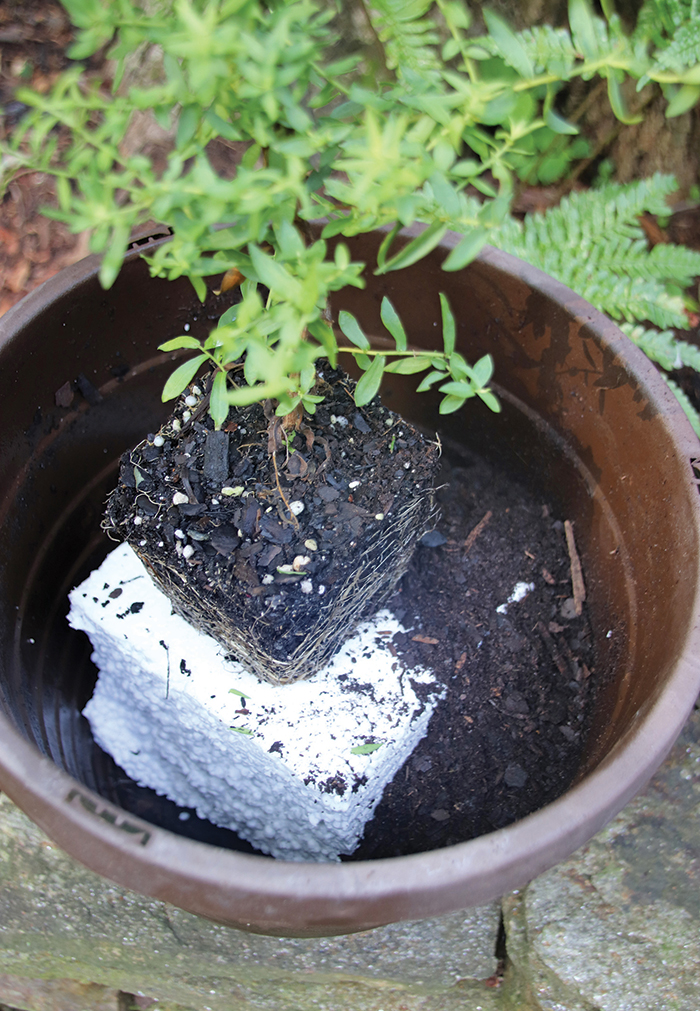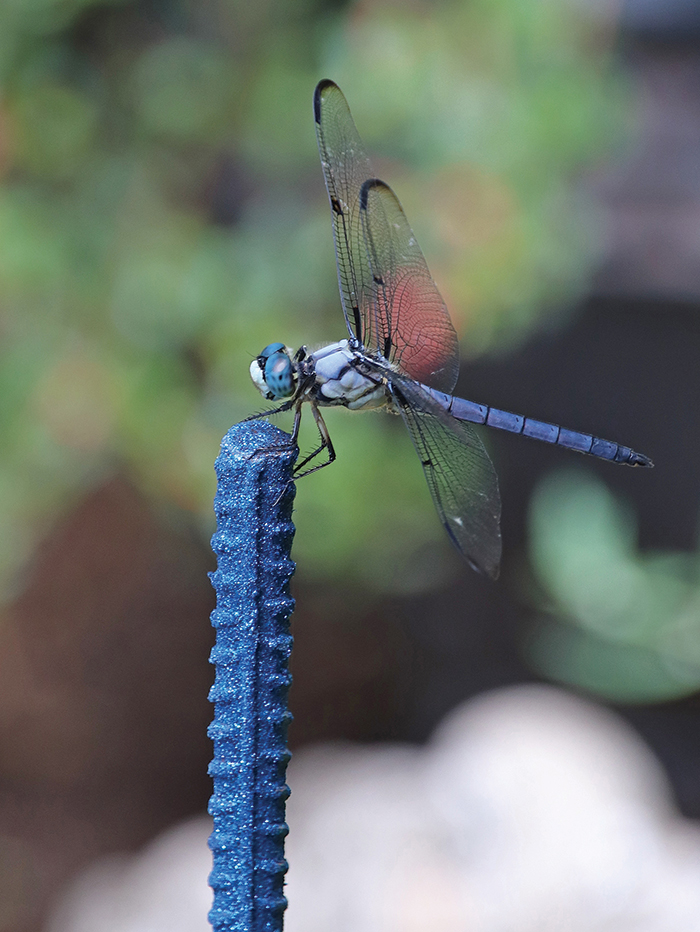Have you ever noticed how dragonflies seem to become one with the tippy-tops of car antennas during the summer? Sure, not every auto aerial finds a dragonfly fully parked, but it happens quite often.

Lighten up window boxes and hanging baskets with Styrofoam.
While filling patio pots, window boxes and hanging baskets with summer ornamentals, stretch your supply of commercial potting soil and lighten up containers at the same time with Styrofoam.
Yep, when used in planters, those useless pieces of lightweight product padding can take up space and take away weight. However, whether you opt for Styrofoam peanuts or broken pieces of molded chunks, for pots up to 18 inches in diameter and about one foot tall or less, try not to fill in more than a third of the containers’ volume. This leaves plenty of room for growing medium, so the roots of annual pretties can stretch out and thrive.
Why dragonflies pick such perches varies between love and war. One school of thought is that the peak of an auto antenna is the perfect perch to see and be seen during mating season. It has also been reasoned that dragonflies use these high, unobstructed roosts to watch for prey.
And dragonflies are efficient killers. In particular, they search the skies for mosquitoes and nasty little flying midges known as no-see-ums — both of which find gardeners delicious.
To encourage frequent visits by these beneficial assassins on the wing, I decided to make my growing grounds dragonfly friendly. I already had a pond garden as a source of water they need to lay eggs in order to complete their life cycle, but not wanting to park my truck in between tomato rows, I had to figure out an antenna alternative.
I settled on rebar (builder speak for “reinforcement bar”) for a few reasons. First, it is tall, slim and made of metal, just like an auto antenna. Second, I had a few rusty six-foot pieces clanging around in my garden shed, and to keep from continually wondering when my next tetanus shot was due, this experiment was an excuse for their eviction. Finally, rebar is tough — it’s difficult to bend, and, while rust might settle on the outside, it has a harder time eating through the carbon steel.
I gave those ol’ raggedy scraps the Cinderella treatment with a good cleaning followed by jazzing them up in bright metallic flake paint. Scattered in sunny areas across my garden, the glittery poles were pounded about 18 inches into the ground, meaning, in this region’s thick clay, they weren’t going anywhere.
Dragonflies came. It wasn’t a constant fly-in, mind you, but seeing them frequently enthroned on top of the recycled rebar spikes gave me the satisfaction I was making mosquitoes and no-see-ums nervous, and as a bonus, I was bringing additional kinetic color into my garden, compliments of these pretty predators.
Watering the garden early in the morning will allow leaves to dry out quickly, lessening the chances of many foliar diseases getting a grip on plants.
Skinny wooden sticks will probably also work, but the heavy metal of rebar makes for a more persistent presence in the garden, especially if you want them to do double duty as trellis posts, vertical supports for tall, floppy perennials, or plant guards in areas frequently snaked by long, clunky water hoses.







